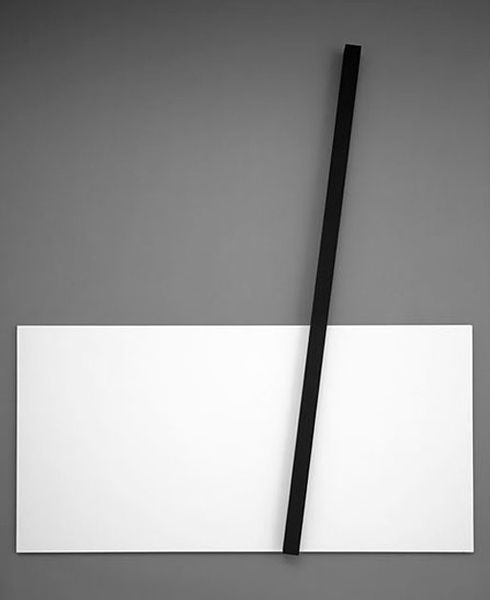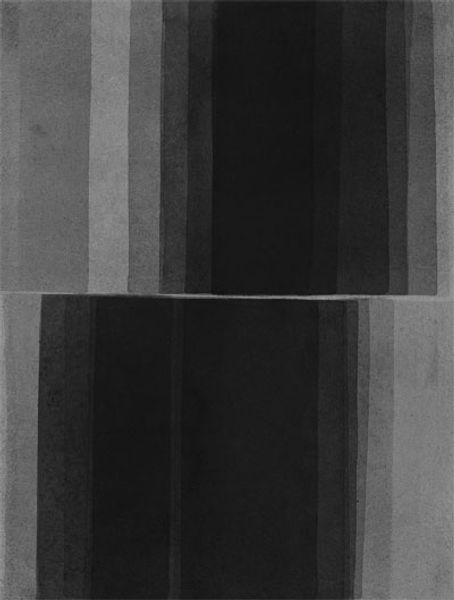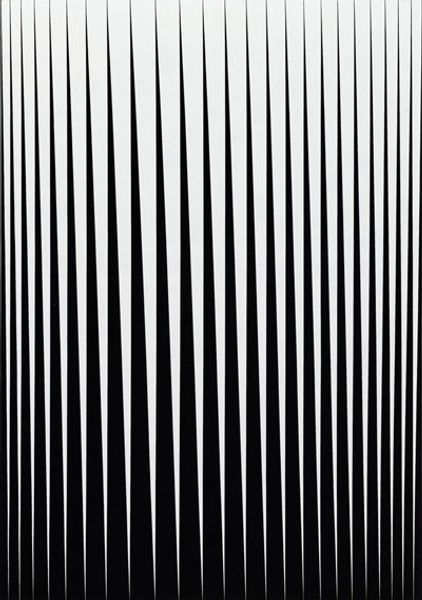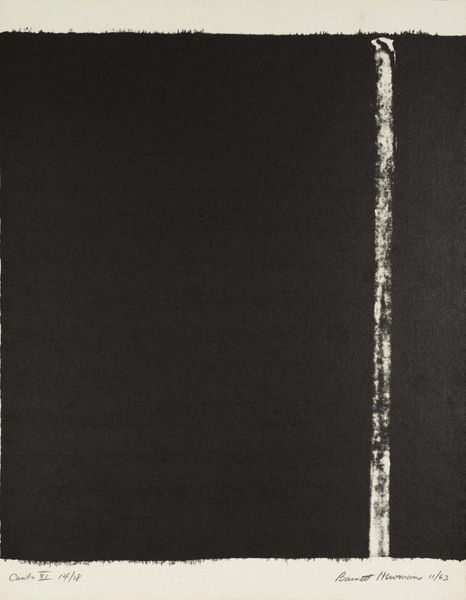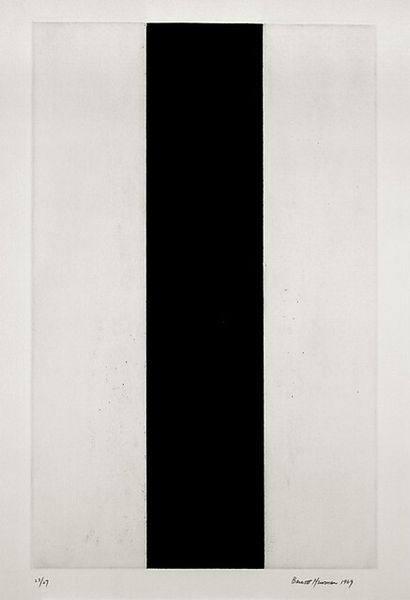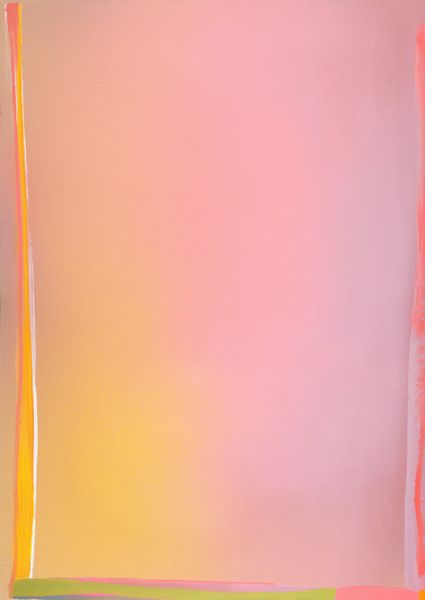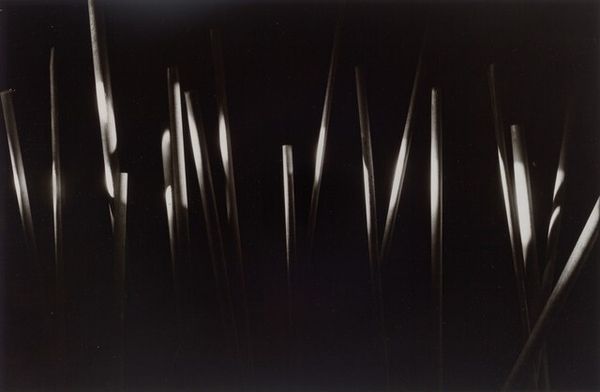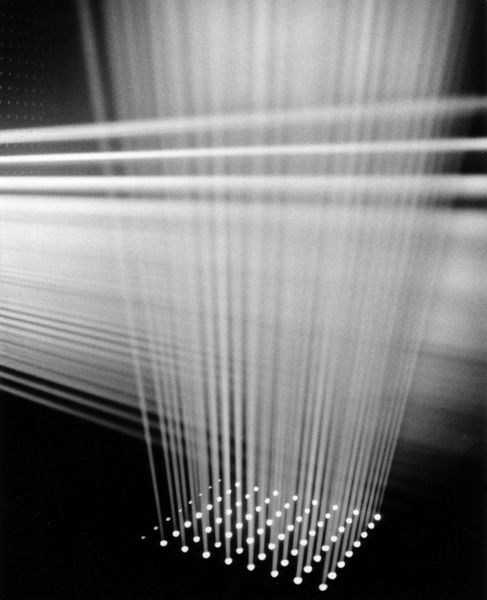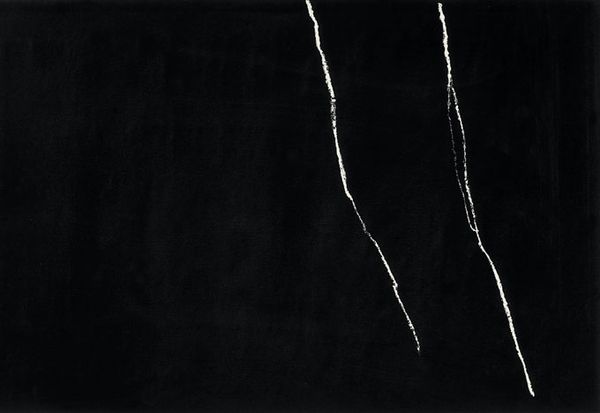
Copyright: Hiroshi Sugimoto,Fair Use
Editor: This is Hiroshi Sugimoto's "Revolution 002, N. Atlantic Ocean, Newfoundland" from 1990, a gelatin silver print. The composition is so stark, almost painfully minimal. The horizon line dividing the dark sea from the lighter sky seems so absolute, yet it's also blurred, almost like it's in motion. What do you see in this piece? Curator: What strikes me is the inherent challenge Sugimoto poses to notions of landscape. While seemingly a serene seascape, it critically engages with the power dynamics embedded within landscape traditions. Newfoundland, for instance, carries the weight of colonial histories, resource exploitation, and contested territorial claims. How does seeing this ocean, a space historically fraught with power struggles, shift your perception of the photograph? Editor: That’s interesting, I was so focused on the pure aesthetic elements that I hadn't considered the geopolitical context at all. It feels wrong to admire its beauty without acknowledging that. Curator: Precisely! Sugimoto's work often subtly implicates us in that discomfort. Consider how photography itself has historically been a tool for documentation and control – mapping territories, defining racial ‘types.’ Even this seemingly abstract image participates in that history. The title forces us to read the work within socio-historical contexts. Are there any particular social dynamics you find emerging from the image and title? Editor: Well, the "revolution" aspect makes me wonder about humanity’s relationship to nature. We are, after all, altering landscapes, especially oceans. I suppose it invites us to consider those tensions, between observer and observed, power and helplessness. Curator: Yes, the title pushes us to think about the revolutionary potential but also the violent repercussions of that impulse, complicating what we’re seeing beyond a beautiful vista. Editor: I had just seen it as abstract lines at first, but the cultural contexts you bring up create new meanings. Thank you! Curator: It's a testament to how art, at its best, can simultaneously reveal and conceal, inviting us to question the very frameworks through which we perceive the world.
Comments
No comments
Be the first to comment and join the conversation on the ultimate creative platform.
